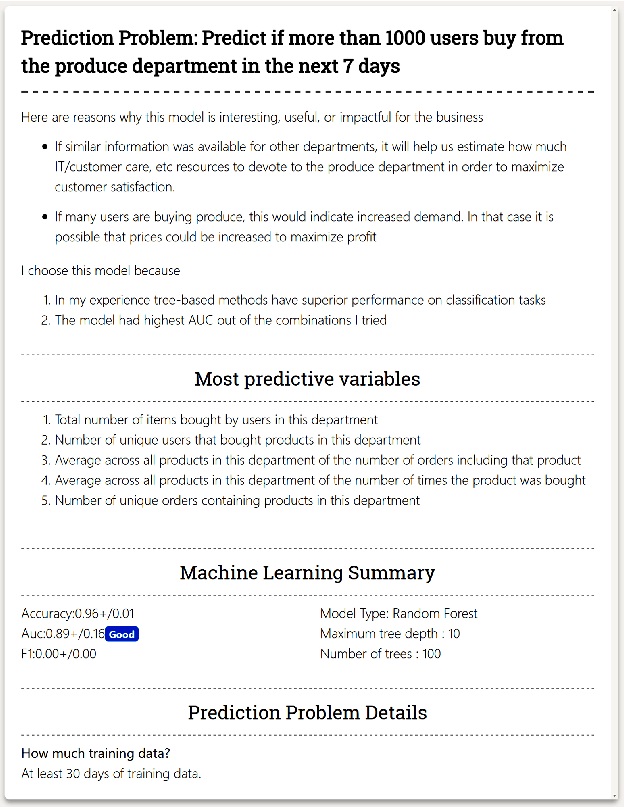Prediction Factory: automated development and collaborative evaluation of predictive models
Paper and Code
Nov 29, 2018



In this paper, we present a data science automation system called Prediction Factory. The system uses several key automation algorithms to enable data scientists to rapidly develop predictive models and share them with domain experts. To assess the system's impact, we implemented 3 different interfaces for creating predictive modeling projects: baseline automation, full automation, and optional automation. With a dataset of online grocery shopper behaviors, we divided data scientists among the interfaces to specify prediction problems, learn and evaluate models, and write a report for domain experts to judge whether or not to fund to continue working on. In total, 22 data scientists created 94 reports that were judged 296 times by 26 experts. In a head-to-head trial, reports generated utilizing full data science automation interface reports were funded 57.5% of the time, while the ones that used baseline automation were only funded 42.5% of the time. An intermediate interface which supports optional automation generated reports were funded 58.6% more often compared to the baseline. Full automation and optional automation reports were funded about equally when put head-to-head. These results demonstrate that Prediction Factory has implemented a critical amount of automation to augment the role of data scientists and improve business outcomes.
 Add to Chrome
Add to Chrome Add to Firefox
Add to Firefox Add to Edge
Add to Edge